Roman Vainshtein
Insights and Current Gaps in Open-Source LLM Vulnerability Scanners: A Comparative Analysis
Oct 21, 2024



Abstract:This report presents a comparative analysis of open-source vulnerability scanners for conversational large language models (LLMs). As LLMs become integral to various applications, they also present potential attack surfaces, exposed to security risks such as information leakage and jailbreak attacks. Our study evaluates prominent scanners - Garak, Giskard, PyRIT, and CyberSecEval - that adapt red-teaming practices to expose these vulnerabilities. We detail the distinctive features and practical use of these scanners, outline unifying principles of their design and perform quantitative evaluations to compare them. These evaluations uncover significant reliability issues in detecting successful attacks, highlighting a fundamental gap for future development. Additionally, we contribute a preliminary labelled dataset, which serves as an initial step to bridge this gap. Based on the above, we provide strategic recommendations to assist organizations choose the most suitable scanner for their red-teaming needs, accounting for customizability, test suite comprehensiveness, and industry-specific use cases.
The Branch Not Taken: Predicting Branching in Online Conversations
Apr 21, 2024



Abstract:Multi-participant discussions tend to unfold in a tree structure rather than a chain structure. Branching may occur for multiple reasons -- from the asynchronous nature of online platforms to a conscious decision by an interlocutor to disengage with part of the conversation. Predicting branching and understanding the reasons for creating new branches is important for many downstream tasks such as summarization and thread disentanglement and may help develop online spaces that encourage users to engage in online discussions in more meaningful ways. In this work, we define the novel task of branch prediction and propose GLOBS (Global Branching Score) -- a deep neural network model for predicting branching. GLOBS is evaluated on three large discussion forums from Reddit, achieving significant improvements over an array of competitive baselines and demonstrating better transferability. We affirm that structural, temporal, and linguistic features contribute to GLOBS success and find that branching is associated with a greater number of conversation participants and tends to occur in earlier levels of the conversation tree. We publicly release GLOBS and our implementation of all baseline models to allow reproducibility and promote further research on this important task.
Automatic Machine Learning Derived from Scholarly Big Data
Mar 06, 2020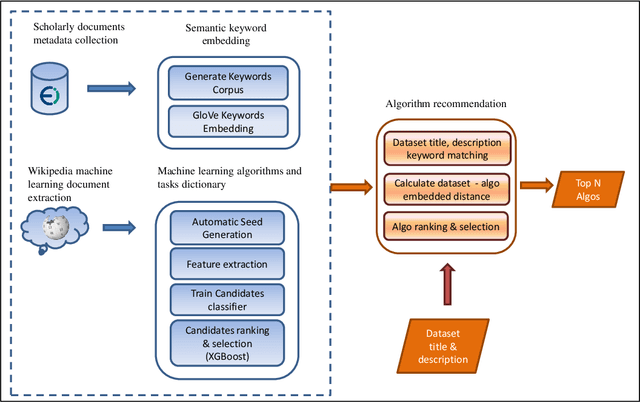
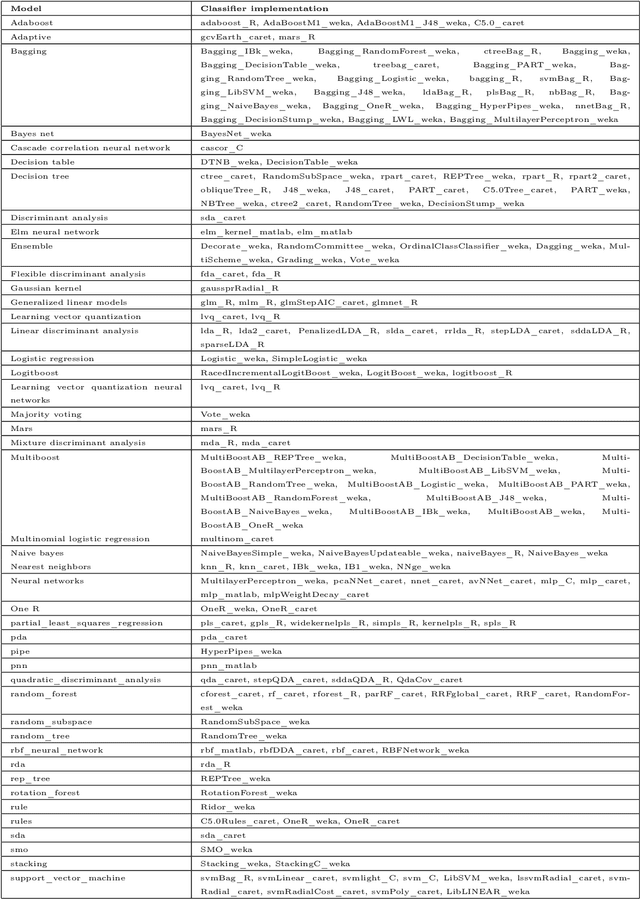
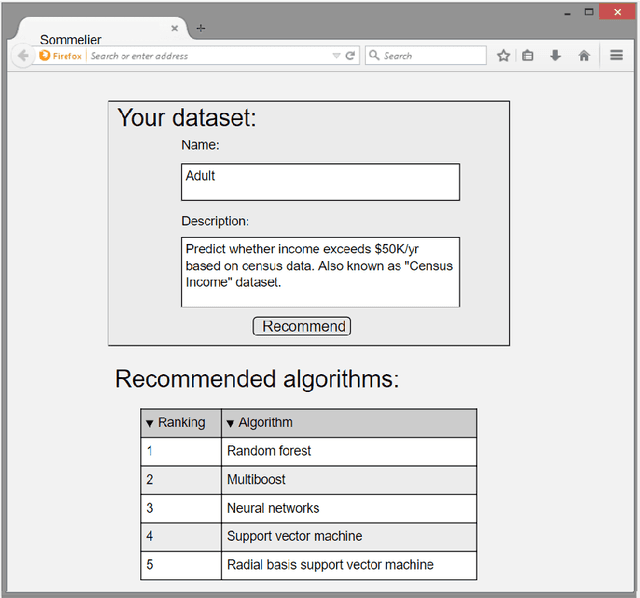
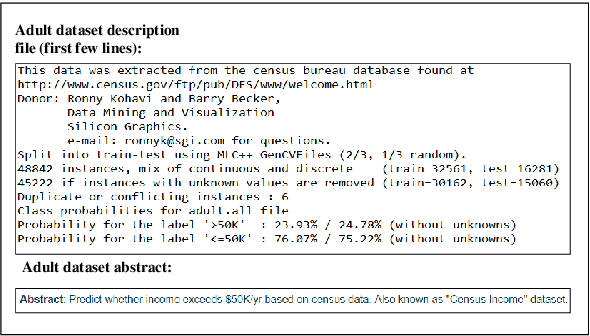
Abstract:One of the challenging aspects of applying machine learning is the need to identify the algorithms that will perform best for a given dataset. This process can be difficult, time consuming and often requires a great deal of domain knowledge. We present Sommelier, an expert system for recommending the machine learning algorithms that should be applied on a previously unseen dataset. Sommelier is based on word embedding representations of the domain knowledge extracted from a large corpus of academic publications. When presented with a new dataset and its problem description, Sommelier leverages a recommendation model trained on the word embedding representation to provide a ranked list of the most relevant algorithms to be used on the dataset. We demonstrate Sommelier's effectiveness by conducting an extensive evaluation on 121 publicly available datasets and 53 classification algorithms. The top algorithms recommended for each dataset by Sommelier were able to achieve on average 97.7% of the optimal accuracy of all surveyed algorithms.
Sequence Preserving Network Traffic Generation
Feb 23, 2020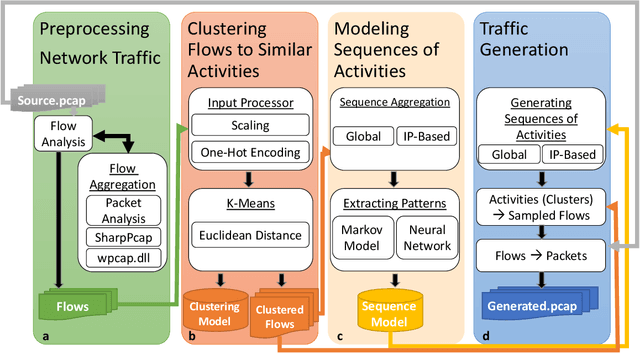

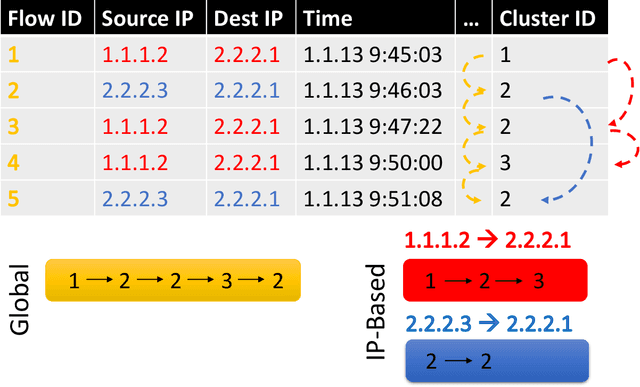
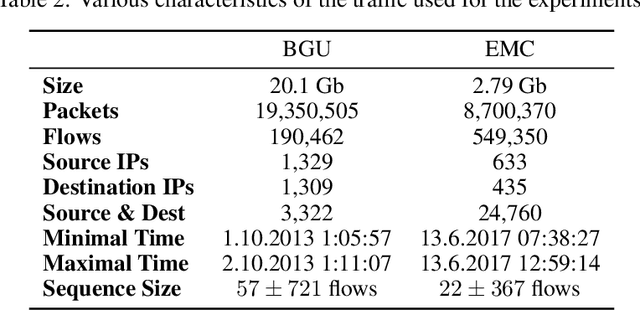
Abstract:We present the Network Traffic Generator (NTG), a framework for perturbing recorded network traffic with the purpose of generating diverse but realistic background traffic for network simulation and what-if analysis in enterprise environments. The framework preserves many characteristics of the original traffic recorded in an enterprise, as well as sequences of network activities. Using the proposed framework, the original traffic flows are profiled using 200 cross-protocol features. The traffic is aggregated into flows of packets between IP pairs and clustered into groups of similar network activities. Sequences of network activities are then extracted. We examined two methods for extracting sequences of activities: a Markov model and a neural language model. Finally, new traffic is generated using the extracted model. We developed a prototype of the framework and conducted extensive experiments based on two real network traffic collections. Hypothesis testing was used to examine the difference between the distribution of original and generated features, showing that 30-100\% of the extracted features were preserved. Small differences between n-gram perplexities in sequences of network activities in the original and generated traffic, indicate that sequences of network activities were well preserved.
RankML: a Meta Learning-Based Approach for Pre-Ranking Machine Learning Pipelines
Nov 20, 2019



Abstract:The explosion of digital data has created multiple opportunities for organizations and individuals to leverage machine learning (ML) to transform the way they operate. However, the shortage of experts in the field of machine learning -- data scientists -- is often a setback to the use of ML. In an attempt to alleviate this shortage, multiple approaches for the automation of machine learning have been proposed in recent years. While these approaches are effective, they often require a great deal of time and computing resources. In this study, we propose RankML, a meta-learning based approach for predicting the performance of whole machine learning pipelines. Given a previously-unseen dataset, a performance metric, and a set of candidate pipelines, RankML immediately produces a ranked list of all pipelines based on their predicted performance. Extensive evaluation on 244 datasets, both in regression and classification tasks, shows that our approach either outperforms or is comparable to state-of-the-art, computationally heavy approaches while requiring a fraction of the time and computational cost.
Assessing the Quality of Scientific Papers
Aug 12, 2019



Abstract:A multitude of factors are responsible for the overall quality of scientific papers, including readability, linguistic quality, fluency,semantic complexity, and of course domain-specific technical factors. These factors vary from one field of study to another. In this paper, we propose a measure and method for assessing the overall quality of the scientific papers in a particular field of study. We evaluate our method in the computer science domain, but it can be applied to other technical and scientific fields.Our method is based on the corpus linguistics technique. This technique enables the extraction of required information and knowledge associated with a specific domain. For this purpose, we have created a large corpus, consisting of papers from very high impact conferences. First, we analyze this corpus in order to extract rich domain-specific terminology and knowledge. Then we use the acquired knowledge to estimate the quality of scientific papers by applying our proposed measure. We examine our measure on high and low scientific impact test corpora. Our results show a significant difference in the measure scores of the high and low impact test corpora. Second, we develop a classifier based on our proposed measure and compare it to the baseline classifier. Our results show that the classifier based on our measure over-performed the baseline classifier. Based on the presented results the proposed measure and the technique can be used for automated assessment of scientific papers.
 Add to Chrome
Add to Chrome Add to Firefox
Add to Firefox Add to Edge
Add to Edge